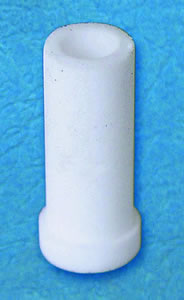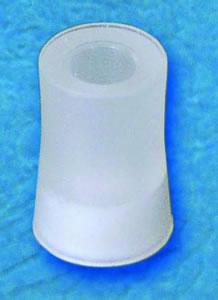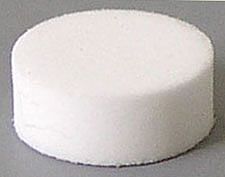Dissolution Filters
What are Dissolution Filters?

Cannula Filter

Filter Tip
Almost every dissolution test relies on samples being taken to produce a result. Filters are used to trap particles of tablet from the sample and prevent them getting into the spectrophotometer.
Most manufacturers use a filter on the end of the sampling cannula. These cannula filters are made of UHMW Polyethylene for larger porosities or Poroplast for lower porosities (1-5µm) and are completely inert to most compounds.
Cannula filters generally have a large surface area and may affect the hydrodynamics in the vessel. However they have a good flow rate and may be used when high particulates are present to prevent particulates from blocking the sample probes. A large porosity range is available although different manufacturers recommend different filters for use with their probes and not all are interchangeable because of the probe diameter.
With dissolution filters, porosities are nominal and represent an average pore size rather than absolute. Thus a 35µm and 40µm filter will perform much the same.
Some low dimension sample probes require an in-line filter disc (or filter frit) which has a lower surface area than a cannula filter. These are designed to keep the filtration process outside of the vessel but may suffer from blocking due to the lower surface area.
If any filters are used it is important that a small amount of media is pushed back in the reverse direction to wash particles off the filter back into the vessel. Particles are part of the tablet and as such should be kept inside the vessel dissolving with the rest of the tablet.

Filter Disc
Failure to do this results in the particles staying on the filter. The effect of this is to not only remove the particles from the media but next time a sample is taken, the media is pulled through the particles stuck to the filter which can give erroneously high readings.
Smaller filter tips will fit on some sample probes. Validated syringe filters and inert syringes are also important for manual filtration.
When selecting a filter, it is wise to conduct some tests to ensure that there is no sample absorption onto the filter. If this is a problem then alternative filters and materials are available but external filtration may be required.
